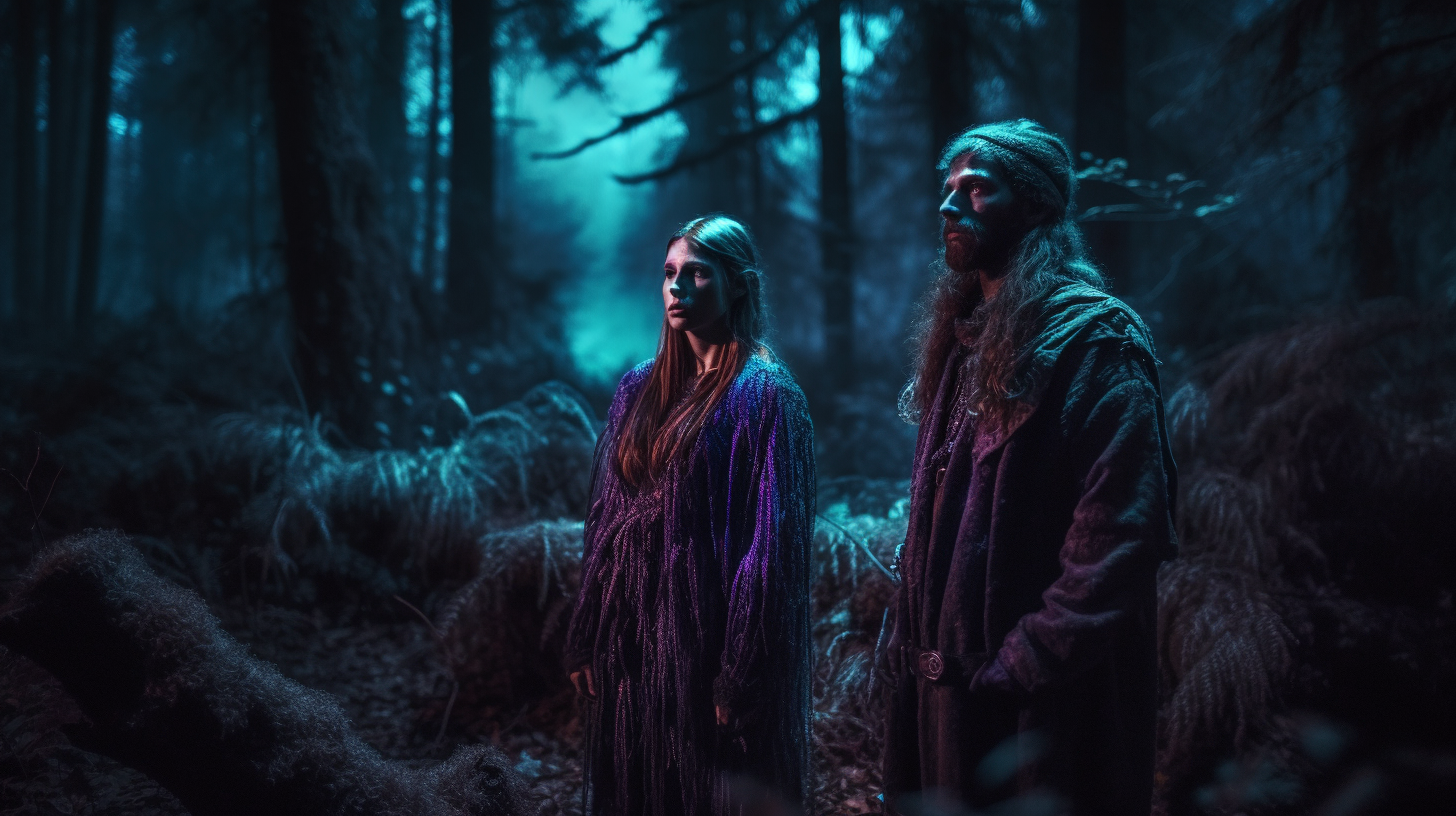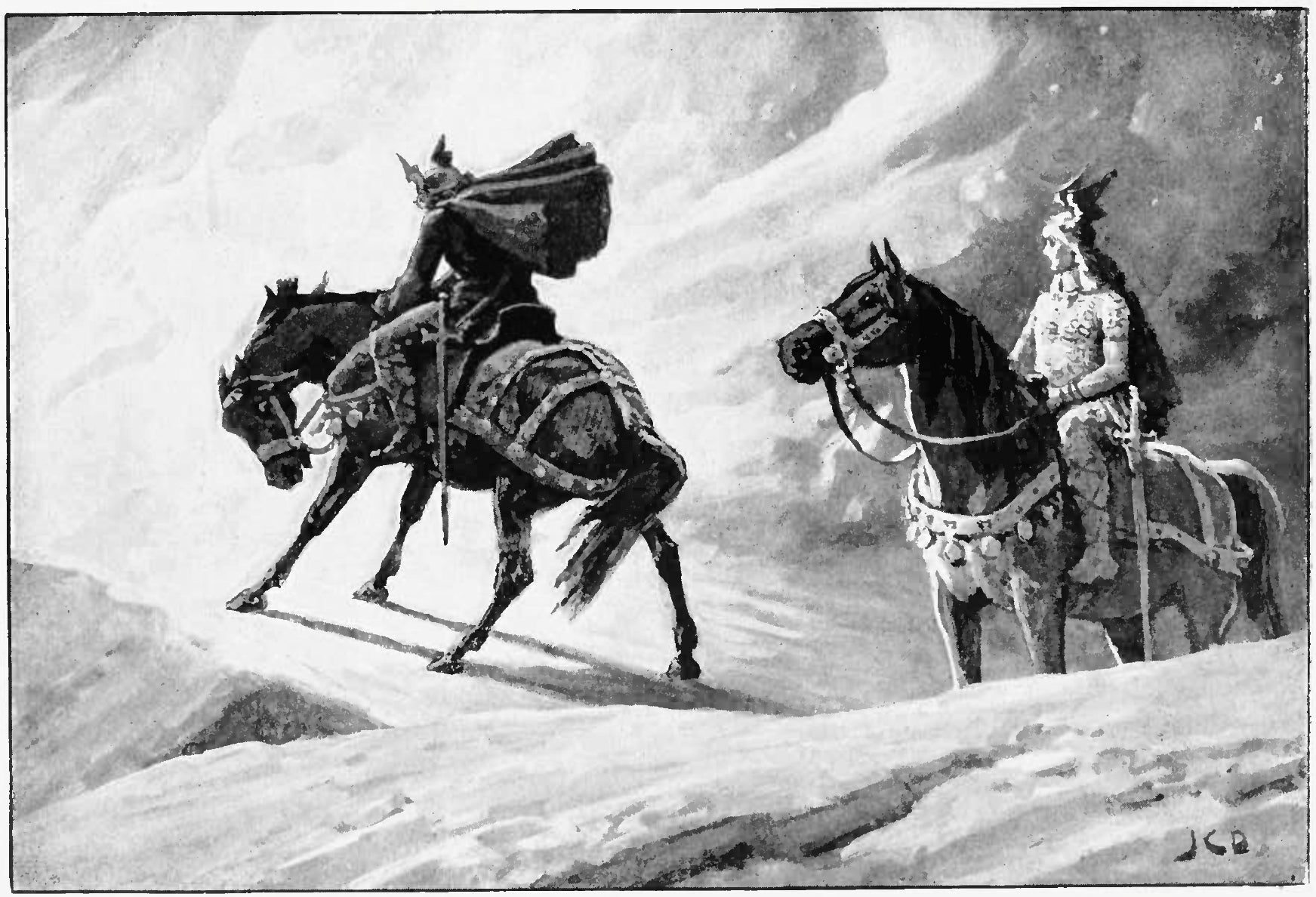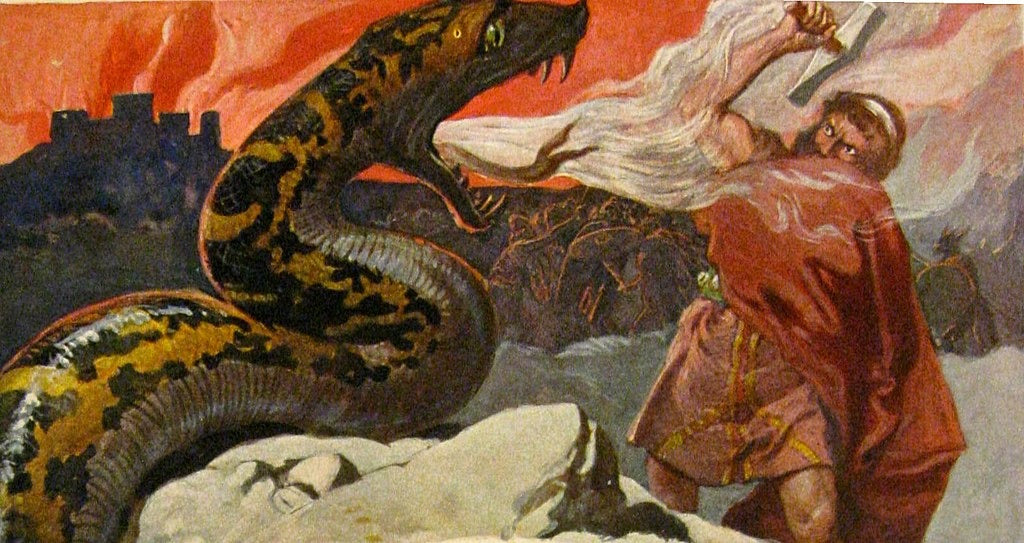
Ask and Embla: The Creation of Humanity in Old Norse Mythology
Can you imagine a world without humans? It's hard to fathom, isn't it? We're so accustomed to our existence that we often take it for granted. But have you ever wondered where we came from or how our species came into being? Well, according to Norse mythology, we owe our existence to two very special beings – Ask and Embla.
This article will delve into the tale of Ask and Embla, the first humans in Norse mythology, and explore the rich symbolism and cultural significance behind their creation story.
Norse Mythology 101

The Tjängvide image stone with illustrations from Norse mythology
What is Norse Mythology?
Before we dive into the creation story, let's briefly touch on what Norse mythology is all about. This ancient belief system originated in Scandinavia and was held sacred by the Norse people, who inhabited modern-day Norway, Sweden, Denmark, and Iceland.
Norse mythology is a vibrant tapestry of tales and legends that revolve around gods, goddesses, heroes, and mythical creatures. It's a world where magic, adventure, and epic battles coexist, leaving an indelible mark on the culture and traditions of the Norse people.
The Nine Realms
At the heart of Norse mythology lies the concept of the Nine Realms, interconnected worlds that make up the cosmos. These realms include Asgard (home of the Aesir gods), Midgard (the realm of humans), Jotunheim (realm of the giants), and Niflheim (the realm of the dead), among others.
The Creation Story

The Primordial Void
In the beginning, there was nothing but the great, gaping void known as Ginnungagap. It was a chaotic, formless expanse where the elemental forces of fire and ice collided, giving birth to the first living being, the primordial giant Ymir.
The First Beings
From the sweat of Ymir's body emerged the first gods, the frost giants, and the cosmic cow Audhumla. As Audhumla licked the salty ice, the first man, Buri, emerged, and from him descended the gods Odin, Vili, and Ve.
Odin and His Brothers
Odin, the mighty All-Father, and his brothers Vili and Ve were the architects of the cosmos as we know it. They slew the giant Ymir and shaped the world from his remains – his blood became the oceans, his flesh the earth, his bones the mountains, and his skull the heavens.
Who Were Ask and Embla?

The First Humans
As the gods walked along the seashore, they came across two lifeless tree trunks – an ash and an elm. Fascinated by these inanimate objects, Odin breathed life into them, granting them spirit and reason. Thus, Ask (the ash) and Embla (the elm) became the first humans, the progenitors of mankind.
The Gift of Life
But Odin didn't stop there. He and his brothers bestowed upon Ask and Embla the gifts that make us human – speech, hearing, sight, and the ability to move and think. It was a momentous occasion, the birth of a new species that would eventually inherit and shape the world.
Humanity's Purpose
According to Norse mythology, Ask and Embla were created to populate the realm of Midgard and serve as caretakers of the earth. They were given the task of cultivating the land, tending to the forests and fields, and living in harmony with nature.
The Symbolism Behind the Story

The Tree of Life
The tale of Ask and Embla is rich in symbolism, and one of the most striking elements is the use of trees to represent the first humans. In many ancient cultures, trees were revered as symbols of life, growth, and regeneration. The ash and elm trees from which Ask and Embla were created signify the deep connection between humanity and nature.
The Three Elements
Another layer of symbolism lies in the gifts bestowed upon Ask and Embla by the gods. Each gift corresponds to one of these three classical elements – speech and hearing (air), sight (fire), and movement (earth). This representation underscores the idea that humans are a microcosm of the universe, comprising the same fundamental elements that make up the cosmos.
Ask and Embla's Legacy

Ask and Embla sculpture by Stig Blomberg 1948, Sölvesborg, Sweden
Myths and Folktales
The story of Ask and Embla has been passed down through generations, inspiring countless myths and folktales. It has become a cornerstone of Norse mythology, shaping the beliefs and traditions of the Norse people.
One such folktale tells of how Ask and Embla's descendants, the first humans, were taught various skills by the gods, such as farming, metalworking, and the art of warfare. These tales not only entertain but also serve as a window into the values and cultural practices of the Norse people.
Cultural Impact
The creation story of Ask and Embla has had a profound impact on Norse culture, influencing everything from art and literature to religious practices and societal norms. Even today, elements of Norse mythology can be found woven into the fabric of modern Scandinavian societies, serving as a reminder of their rich cultural heritage.
Conclusion
The tale of Ask and Embla is a captivating glimpse into the Norse understanding of human origins. It is a story that celebrates the intrinsic connection between humanity and nature, while also highlighting the gifts and responsibilities bestowed upon us by the gods.
Through this myth, we not only gain insight into the beliefs and values of the Norse people but also become privy to the universal human desire to understand our place in the cosmos. The story of Ask and Embla serves as a testament to the enduring power of mythology and its ability to weave together the threads of culture, tradition, and existential curiosity.
References
Tjängvide stone image By Berig - Own work, CC BY-SA 4.0, https://commons.wikimedia.org/w/index.php?curid=3682858
"File:Sölvesborg Ask och Embla.jpg" by Sendelbach (talk) is licensed under CC BY-SA 3.0.








